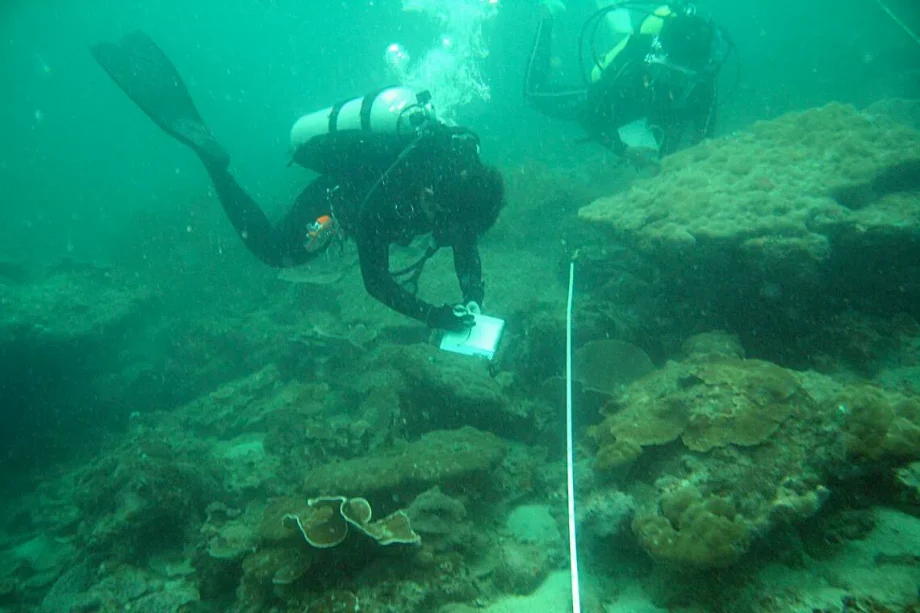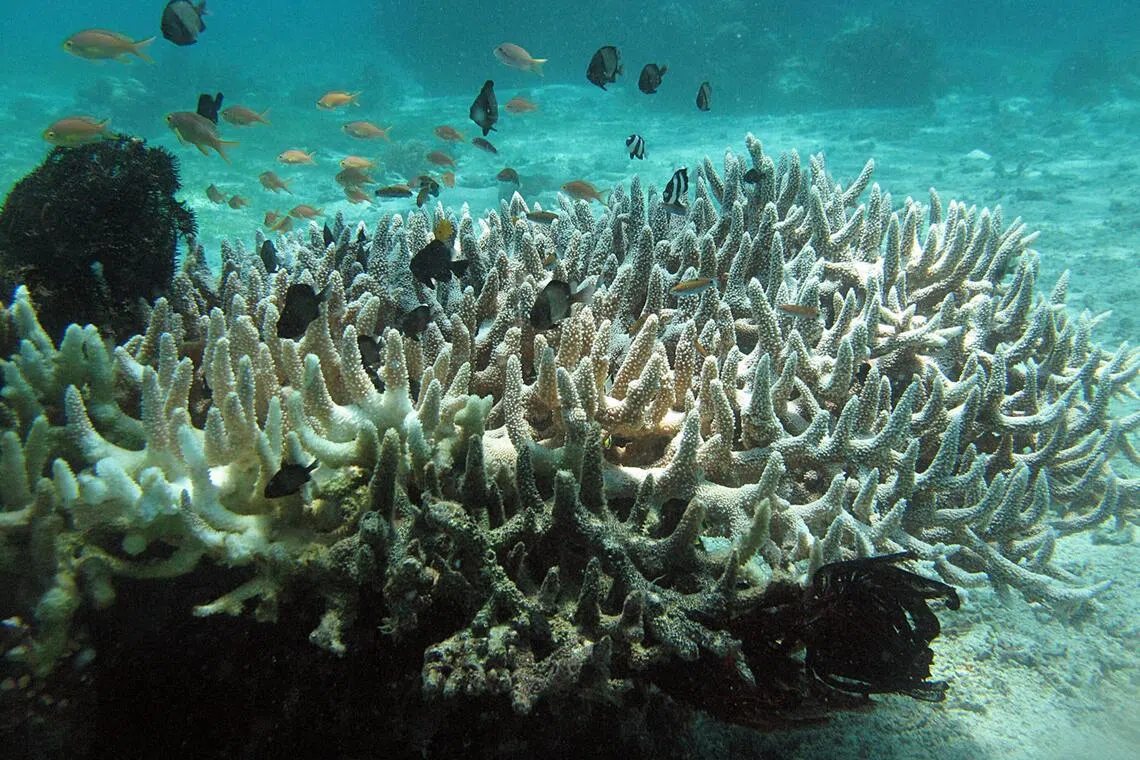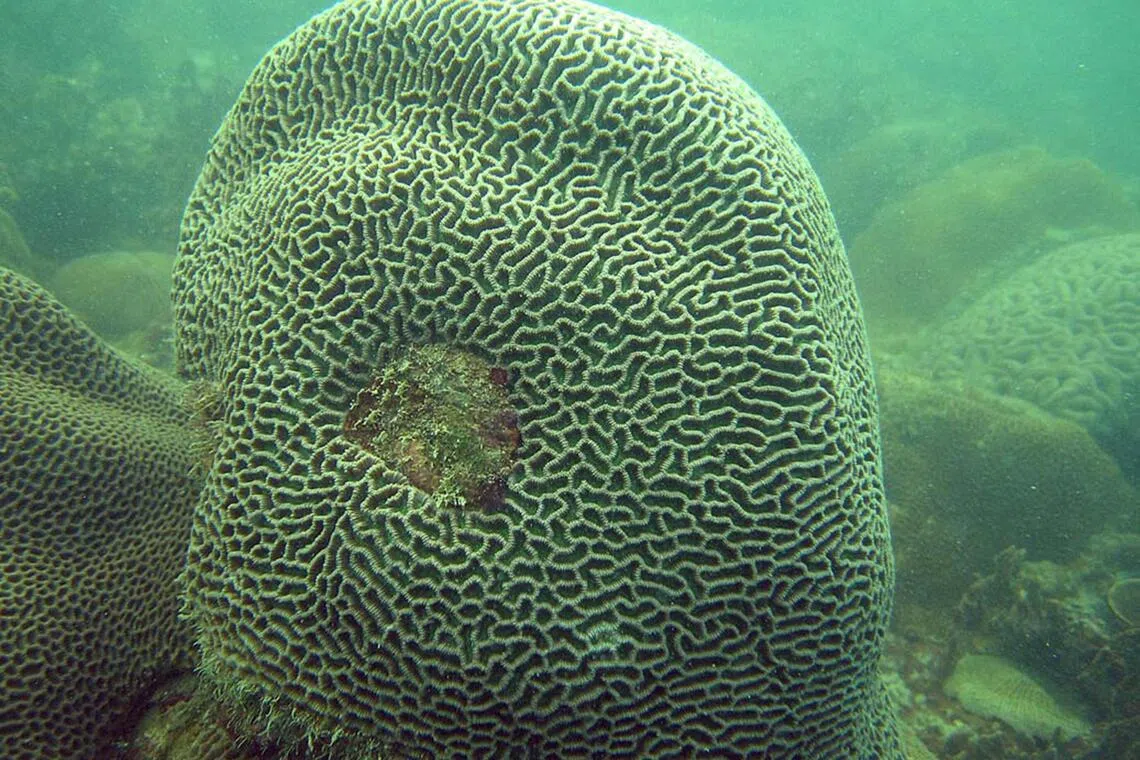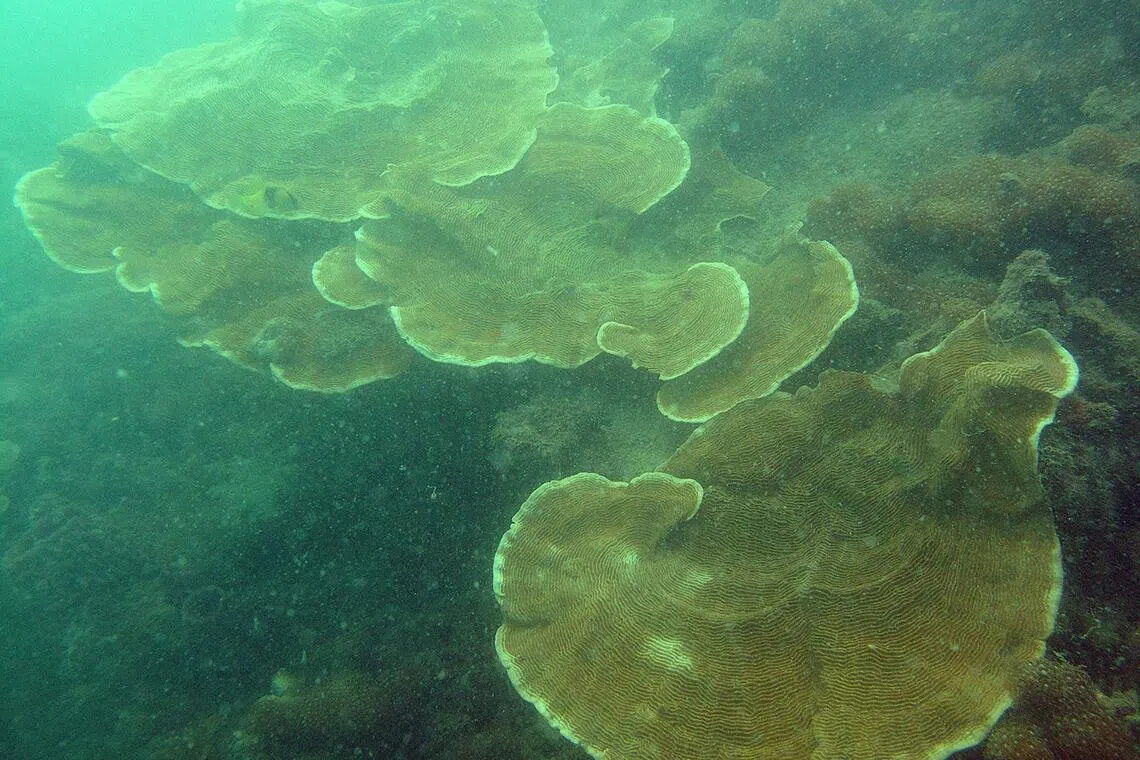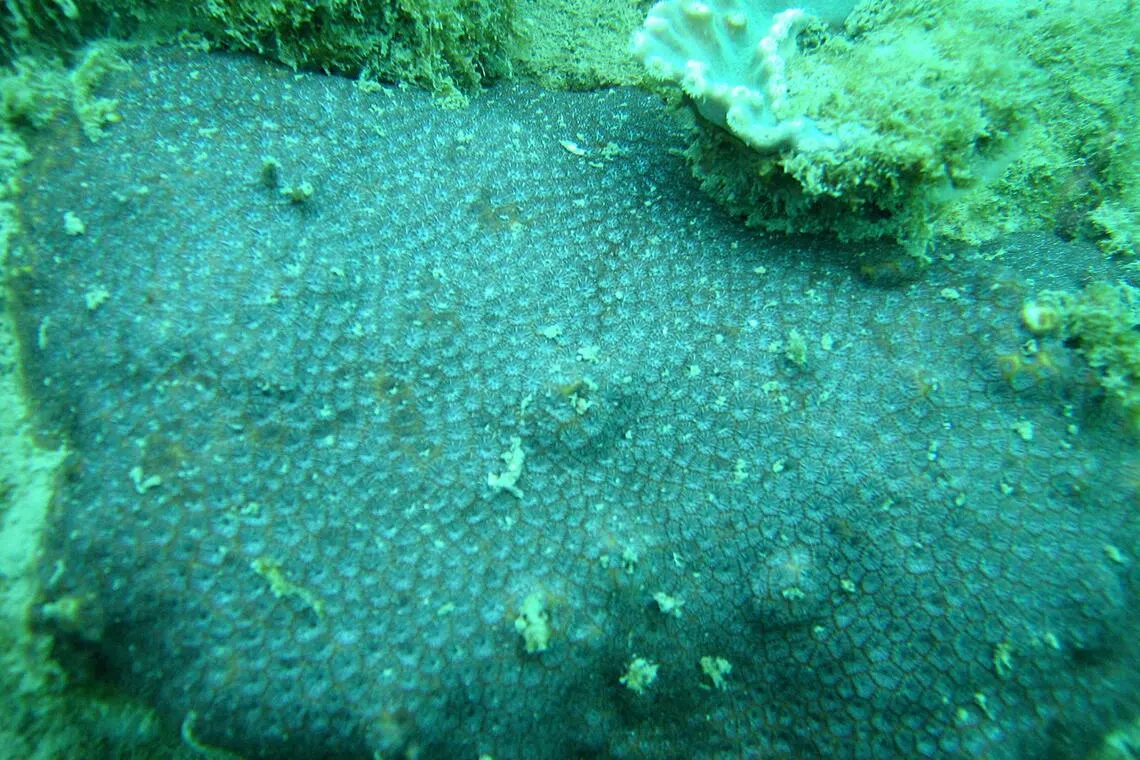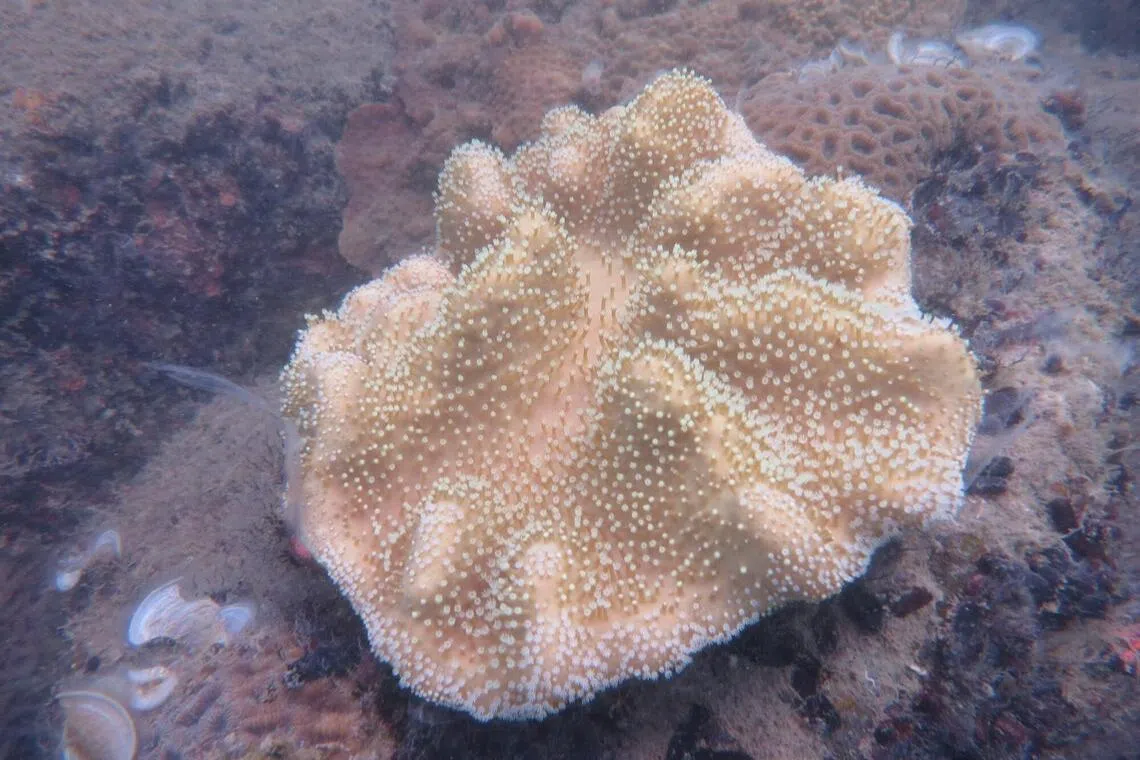SINGAPORE – As more than two-thirds of Singapore’s coral reefs have been lost to coastal development and reclamation since the 1960s, the characteristics of its remaining reefs have changed dramatically over the decades.
For one thing, there are fewer fast-growing and branching corals now, which means fewer marine animals are able to seek shelter within the reefs.
Coral species dominating the remaining 10 sq km stretches of reefs are mostly dome-shaped or flat, and they are expected to host a lower diversity of marine life, said marine biologist Huang Danwei, deputy head of the NUS Lee Kong Chian Natural History Museum.
However, these species tend to be more adaptable and tolerant of stressors like heated up waters, he added.
The declining ecological roles of Singapore’s reefs were a key finding of the first study that tracked the species and functions of the island-state’s coral reefs since the 1950s.
This study was published in a new book, Coral Reefs Of Singapore’s Urbanised Sea, released in October.
The over 230-page tome – edited by Associate Professor Huang and Emeritus Professor Chou Loke Ming from the NUS Department of Biological Sciences – documents how reefs respond to decades of urbanisation impacts and marine heatwave episodes caused by climate change.
Understanding the reefs’ past could offer glimpses into the future, especially as the Republic recently embarked on a 10-year effort to plant 100,000 corals in its waters – its largest coral restoration effort to date.
Most of Singapore’s intact reefs are in the Southern Islands. The island-state is home to around 250 species of hard corals, a third of the world’s coral species. More than 200 species of sea sponges and 120 species of reef fish, including rare seahorses, rely on the reefs for shelter and food and to rear their young.
Sea sponges, often mistaken for plants, are colourful aquatic animals with dense, porous skeletons.
The book’s authors have described Singapore’s reef environment as “extreme”. Decades of extensive land reclamation, coastal development and regular dredging of shipping channels in the region have caused the waters to be murky and sedimented.
Since 1997, the reefs have also been struck by four global coral bleaching events, with the most recent one in 2024 killing about 5 per cent of local corals.
Corals get their vibrant colours from microscopic algae living in their tissues. When stressed by warmer waters, the corals expel the algae and turn ashen white in a phenomenon known as coral bleaching.
After the massive coral losses in the 2024 coral bleaching episode, scientists here are expecting the ecological functions of the reefs to be depressed over the next few years, said Prof Huang.
While intricately shaped and branching corals like the acropora are fast-growing, they are most sensitive to environmental stress, and their numbers have declined significantly over the years, he added.
Stress-tolerant species like the brain coral have persevered, filling the space left by the dying branching corals.
“Species that grow and colonise the reef environment quickly, and thus can help facilitate recovery during times of stress, have also declined,” said Prof Huang, citing the spiky, thin bird’s nest coral that was declared locally extinct in 2024.
In October, a global report by 160 scientists declared that the planet is facing its first catastrophic tipping point due to global warming, with warm-water coral reefs at risk of dying out.

